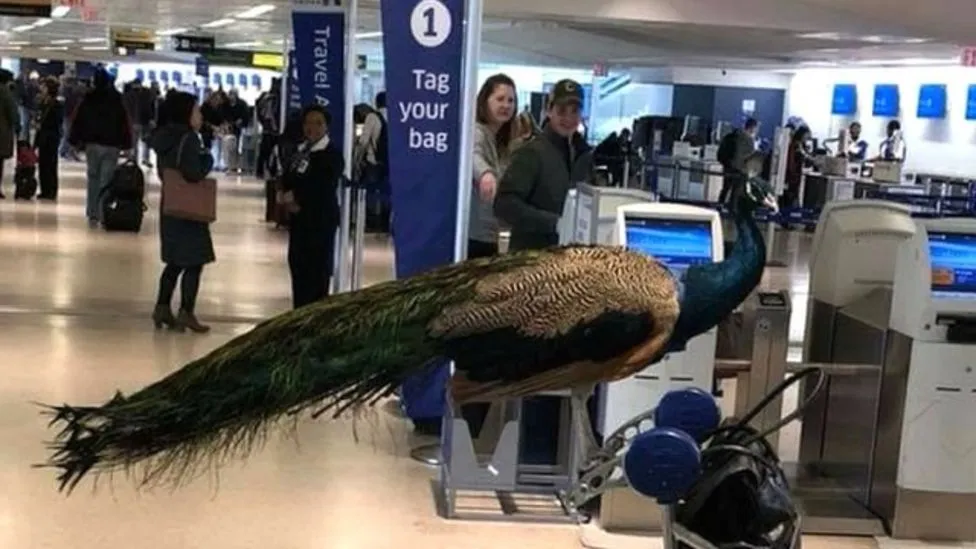
No more crazy support animals on US flights
Dec 03, 2020

Recent changes in U.S. airline regulations have led to stricter rules regarding emotional support animals on flights. Previously, passengers could bring a wide variety of animals as emotional support companions, often leading to instances of misuse. Under the new guidelines, airlines are no longer required to accommodate these animals in the same way they do service animals. Only trained service animals, primarily dogs, will be allowed to accompany passengers in the cabin. This shift aims to enhance safety and comfort for all travelers, reducing disturbances and ensuring that animals on board are specifically trained to assist individuals with disabilities.
As the airline industry evolves, so do the policies regarding emotional support animals (ESAs) on flights. Passengers often bring their ESAs for comfort, but the rise of unusual animals has led to confusion and challenges for airlines and travelers alike. In response, airlines have begun to implement stricter guidelines, effectively putting an end to the trend of "crazy support animals." This article delves into the recent changes, the impact on travelers, and what to expect in the future.
The Shift in Airline Policies
In recent years, several major airlines have revised their policies concerning emotional support animals. The Department of Transportation (DOT) has also made significant changes, which directly affect how airlines handle ESAs. Airlines are now allowed to make their own rules regarding which animals can be accepted as ESAs, leading to a more standardized approach across the industry.
Previously, passengers could present virtually any animal as an ESA, including exotic creatures like iguanas, turkeys, and even pigs. However, with these recent policy changes, airlines are focusing on more traditional support animals, primarily dogs and, in some cases, cats.
New Guidelines for Emotional Support Animals
Under the new regulations, airlines are required to recognize only dogs as emotional support animals, while other species may still be considered service animals under specific circumstances. Here’s a breakdown of the new guidelines:
| Type of Animal | Allowed as ESA? | Notes |
|---|---|---|
| Dogs | Yes | Must be trained to assist with specific tasks. |
| Cats | No | Not recognized as ESAs by most airlines. |
| Exotic Animals (e.g., pigs, birds) | No | Not allowed under new policies. |
Impact on Travelers and Airlines
The revised policies have sparked mixed reactions among travelers. For those who genuinely rely on emotional support animals for mental health support, the changes are met with disappointment. Many feel that limiting the type of animals allowed may diminish their ability to travel comfortably.
On the other hand, airlines welcome these changes as they provide clarity and reduce the instances of passengers attempting to board with unconventional animals. The idea is to create a more comfortable environment for all travelers, particularly those who may have allergies or phobias.
Moreover, airlines are now implementing more stringent documentation requirements for emotional support animals. Passengers are often required to submit additional paperwork, including a letter from a licensed mental health professional, attesting to the need for the animal during the flight.
What to Expect in the Future
As the industry continues to adapt, it is anticipated that more airlines will refine their policies surrounding emotional support animals. The following trends may emerge:
- Increased Documentation: Airlines may require more comprehensive documentation from passengers traveling with ESAs to ensure legitimacy.
- Broader Acceptance of Service Animals: While ESAs may be limited, airlines might expand their definitions of service animals, allowing for more types of trained assistance animals.
- Enhanced Training Programs: Airlines may collaborate with organizations to develop training programs for service animals, ensuring they are equipped to handle the unique challenges of air travel.
Conclusion
The end of "crazy support animals" on U.S. flights marks a significant shift in the airline industry. As policies become more standardized, travelers can expect a more predictable experience when flying with emotional support animals. While this change may pose challenges for some, it ultimately aims to create a safer and more comfortable environment for all passengers.
For future travelers, it’s essential to stay informed about the specific policies of your airline regarding emotional support animals. Knowing what to expect can aid in planning your journey and ensure a smoother travel experience.
In summary, as the aviation landscape continues to evolve, the changes in emotional support animal policies reflect a growing understanding of the need for balance between passenger comfort and safety. With these new regulations, the focus will shift back to providing genuine support for those in need, while maintaining a pleasant atmosphere for all travelers.
Related Articles

Explore Thailand: The Best Islands to Visit for Paradise, Adventure, and Relaxation

The Ultimate Guide to the Best Islands in Thailand for Your Next Getaway

Do babies need passports? How to get a passport for a newborn

How to get a U.S. passport fast: here’s how to expedite the process

What is Mobile Passport Control: 5 reasons why you should use it

SENTRI vs. Global Entry: A detailed guide

Do you need a passport to go to the Bahamas? Let’s find out

Do you need a passport to go to Mexico? A detailed guide

Do you need a passport to go to Canada? We got the answer

Do You Need a Passport for a Cruise: An Essential Travel Guide

Booster Seat Requirements: All the Rules to Follow in Your Rental Car

What Are the World’s Most Powerful Passports, and How Does Yours Rank?

How to Take a Passport Photo at Home: A Helpful Guide

You've got to have heart! Southwest's new livery

Your opinion: Should water be free on low cost carriers?

Young women bolder than guys as solo travellers
